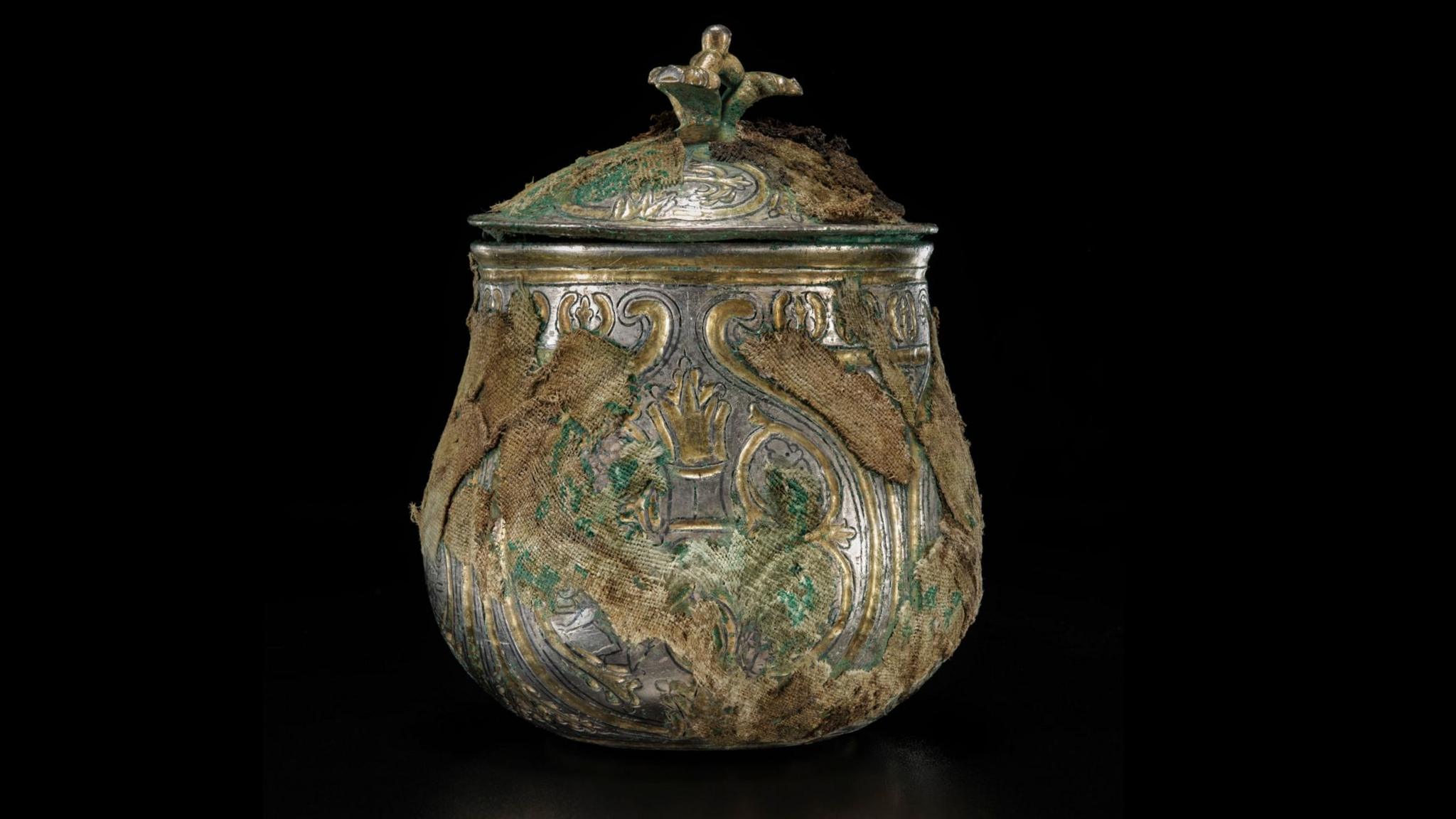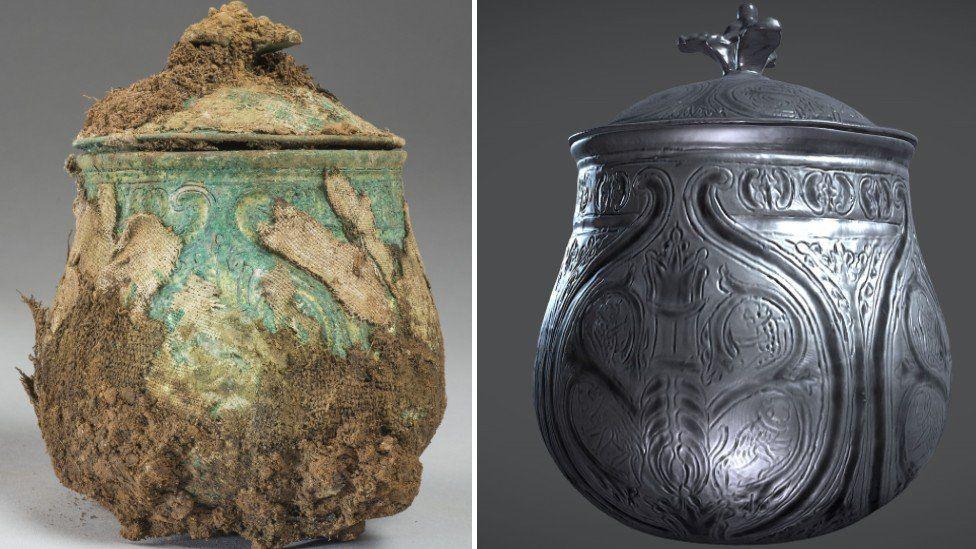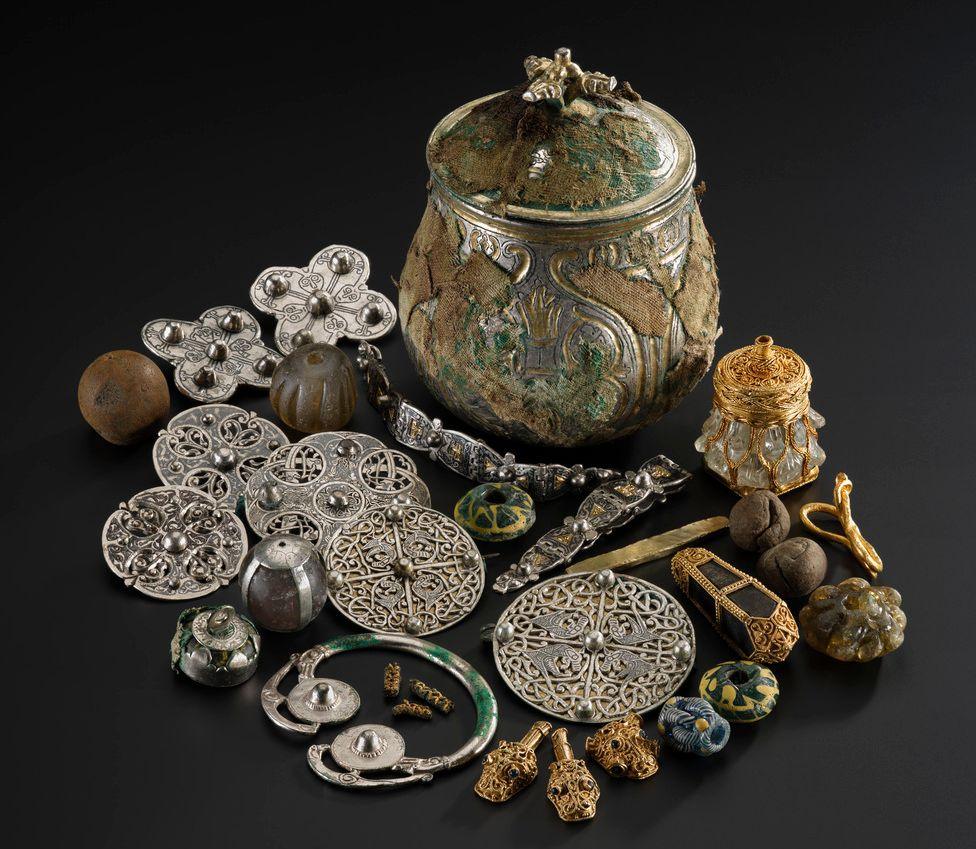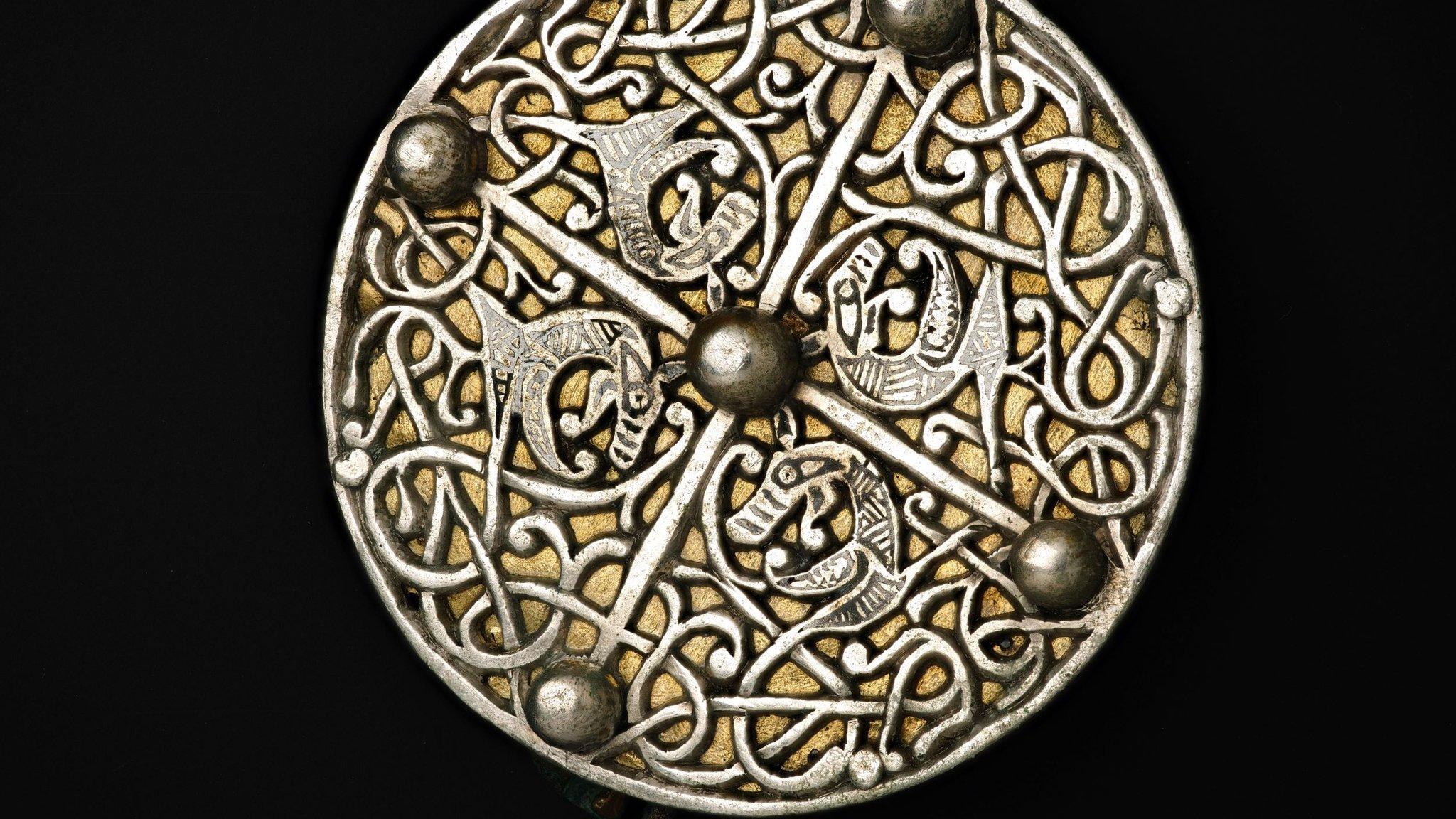Viking-age treasure came to Scotland from West Asia

The urn has been cleaned with lasers and some of the textiles have been removed
- Published
Ten years on from the discovery of the Viking-age Galloway Hoard in south Scotland, experts have revealed that part of the collection came from West Asia.
The collection - described as one of the most important UK archaeological finds of the century - was found by metal detectorist Derek McLennan in 2014.
A lidded silver vessel was discovered still wrapped in its ancient textiles, which is extremely rare, and meant that the surface of the vessel could at first only be seen through X-ray scans.
Experts say the vessel is originally from central Iran and it was transported halfway around the world more than 1,000 years ago.

Experts have previously used X-rays and 3D modelling to recreate how the urn would have looked
The vessel was found to contain other treasures, like silk and brooches.
Its textiles have now been partially removed and preserved, and the vessel has been cleaned using lasers which removed any green corrosion and revealed details of the design, including crowns, fire altars, leopards and tigers.
This imagery is unusual in western Europe but it is linked with the iconography of Zoroastrianism, the state religion of the Sasanian Empire which was the last Persian empire before the early Muslim conquests from 632AD.
The hoard - which contained more than 5kg of silver, gold and other materials - was discovered on what is now Church of Scotland land near Balmaghie in the historical county of Kirkcudbrightshire.

The vessel was found with an array of other treasures
Dr Martin Goldberg from the National Museums Scotland said the vessel was "further evidence of the cosmopolitan make-up of the Galloway Hoard".
He said: "We now know that the Viking-age silver that makes up most of the Hoard was melted down from coins and metalwork from early medieval England.
"Some objects, like the lidded vessel, stood out from the rest and the scientific analysis now confirms this.
"It is incredible to imagine how the vessel made its journey halfway round the known world, from Iran to this distant corner of southwest Scotland.”
The artefact from about 900AD is set to go on public display for the first time next week, on loan to the British Museum’s upcoming Silk Roads exhibition in London.
Other objects from the Galloway Hoard will go on long-term display at the National Museum of Scotland in Edinburgh, while a portion will go on show at Kirkcudbright Galleries.
Dr Sue Brunning, from the British Museum, said: "We're delighted that visitors to Silk Roads will be the first in the world to see this key object from the Galloway Hoard.
"Among its remarkable contents were Scotland's earliest recorded silk, and so it is a highly appropriate inclusion in the exhibition."
Related topics
- Published30 July 2022

- Published10 October 2021

- Published21 December 2020
